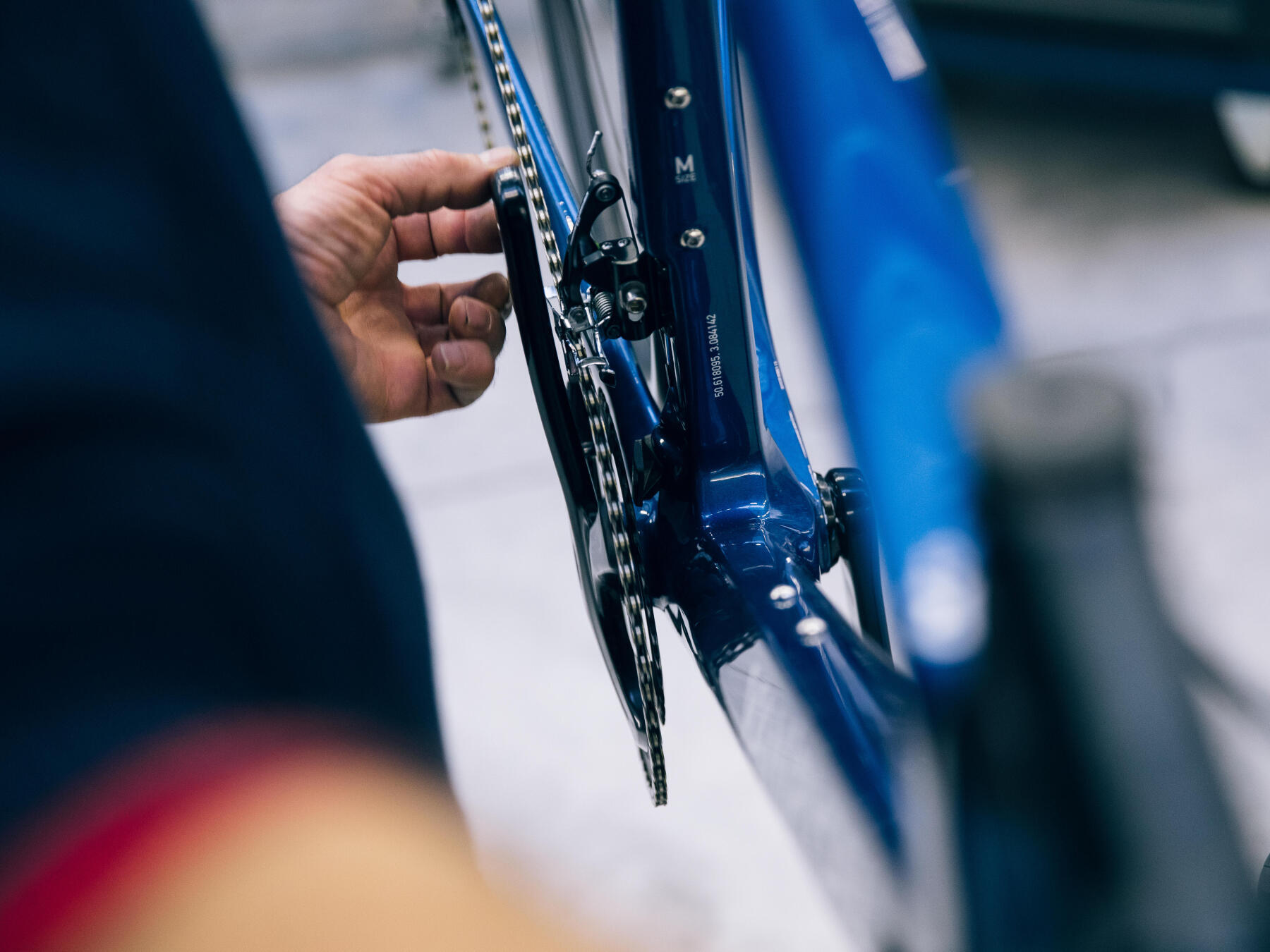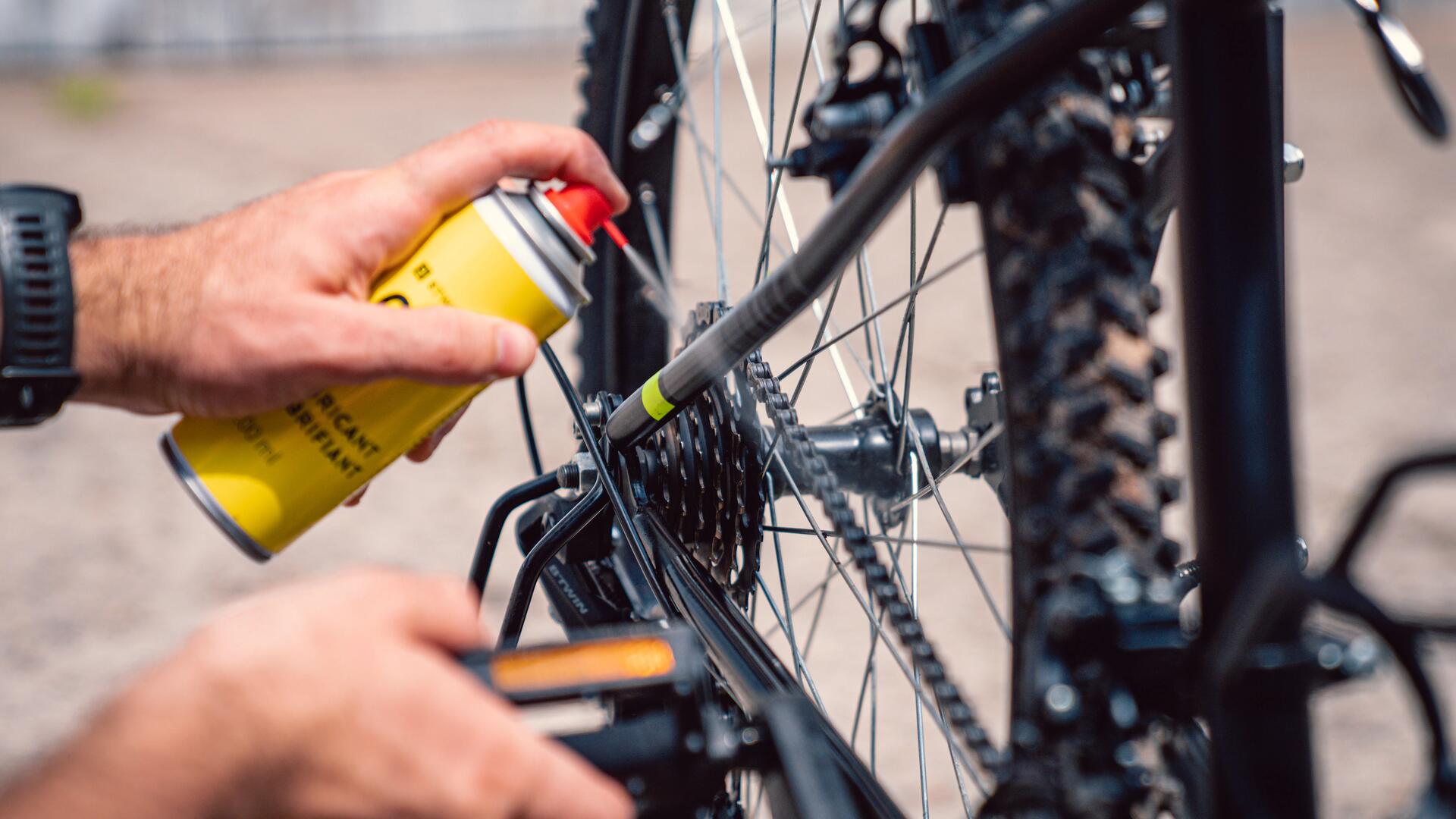No matter how long you're going out for, there are certain things you should always check so that you can set out safely and with peace of mind.
You could find yourself heading home early if you neglect to perform these checks.

We've all had those times when our tyres were under-inflated, or we had a sudden flat, or the chain was squeaking because we didn't take the time to inspect our bike before a ride. Check out our maintenance tips to enjoy more incident-free rides!
You could find yourself heading home early if you neglect to perform these checks.

You don't need to get your pump out before your ride to check the exact tyre pressure. You can simply use your thumb to detect any punctures.
Even if your bike got home from your last ride unscathed, a piece of flint could well have lodged itself in the tyre and caused some air to escape. This is known as a slow puncture. Overnight, your tyre could go flat or lose a lot of pressure.
When checking your tyres, you can also take a quick look over the entire surface to make sure there isn't anything embedded in the rubber and that there aren't any other problems (hernias, tears, etc.).
If you got a puncture on your last ride and did a roadside repair, remember to take a spare inner tube with you!

Check that your brakes are working properly and that your brake pads are in good condition. If you've been riding in the rain or in very damp weather, the pads could wear out over the course of just a few rides.

Another thing to inspect is how well lubricated your chain is. If you've ridden in the rain, a post-ride clean will get rid of any dirt and gives you a chance to dry your bike. This will stop it from rusting.
Even in dry weather, you should regularly lubricate your chain to make it last longer. A fine layer of oil is enough to keep it running smoothly. But don't apply too much! Once you've lubricated your entire chain, turn the pedals and wipe off any excess oil with a cloth.
Avoid grease at all costs. Your drivetrain will be lovely and quiet, but grease has the big disadvantage of holding on to dust and sand. When covered in this mixture, your chain will be very abrasive, which will severely shorten the lifespan of your sprockets and chainrings.
If you want to be certain of your chain's state of health, it's worth "investing" €10 in a chain wear indicator, which will easily show you how worn your chain is. It means you won't end up changing your chain too early or too late (causing increased wear on the chainrings and sprockets).

Check anything attached with a quick release, especially the wheels.
For any other adjustable parts, such as the stem and seat post, a monthly check is enough. But don't tighten them too much as this could damage the thread. If you don't have a torque wrench, tighten everything just enough so that it doesn't move, then give it an extra quarter-turn (no more).

If you noticed that something wasn't quite right during your last ride, take this opportunity to quickly adjust your derailleurs. Just a quarter-turn of the screw is usually enough to set everything up correctly.

Find all our assembly, servicing and repair tips for your product on the support website.
You'll also find advice on using your product for the first time, along with the instructions and even spare parts that are compatible with your product!